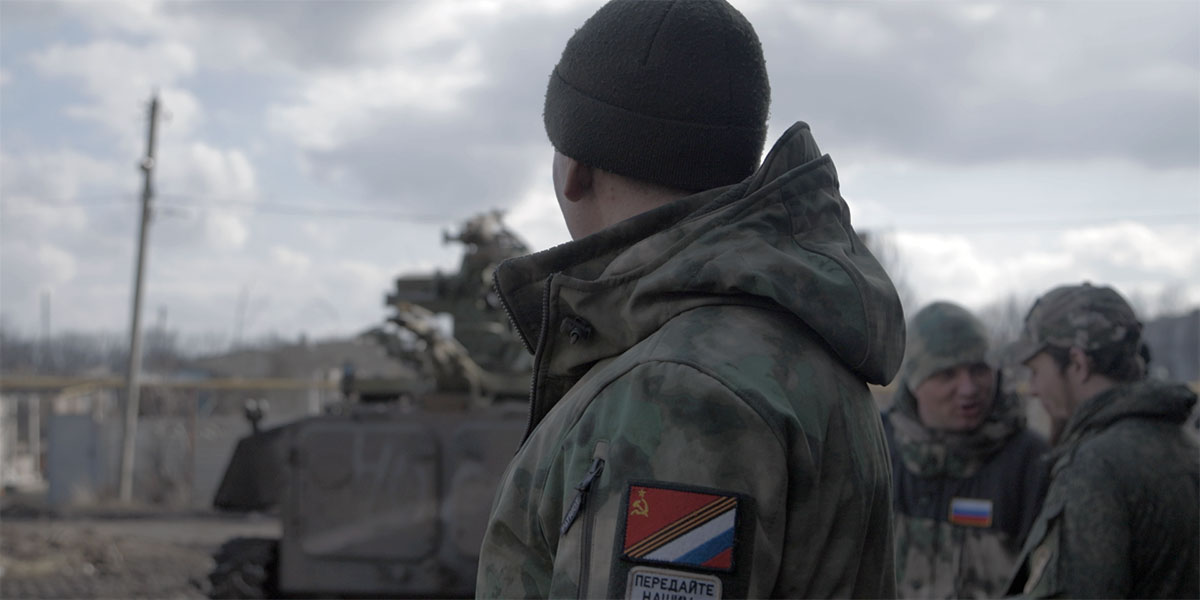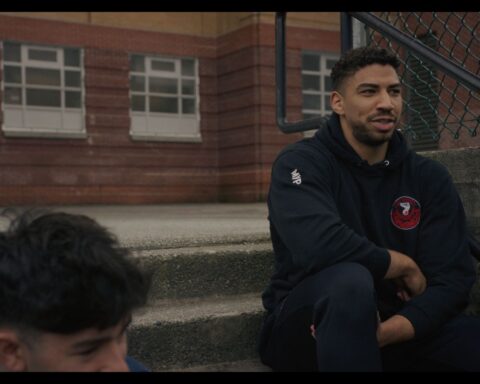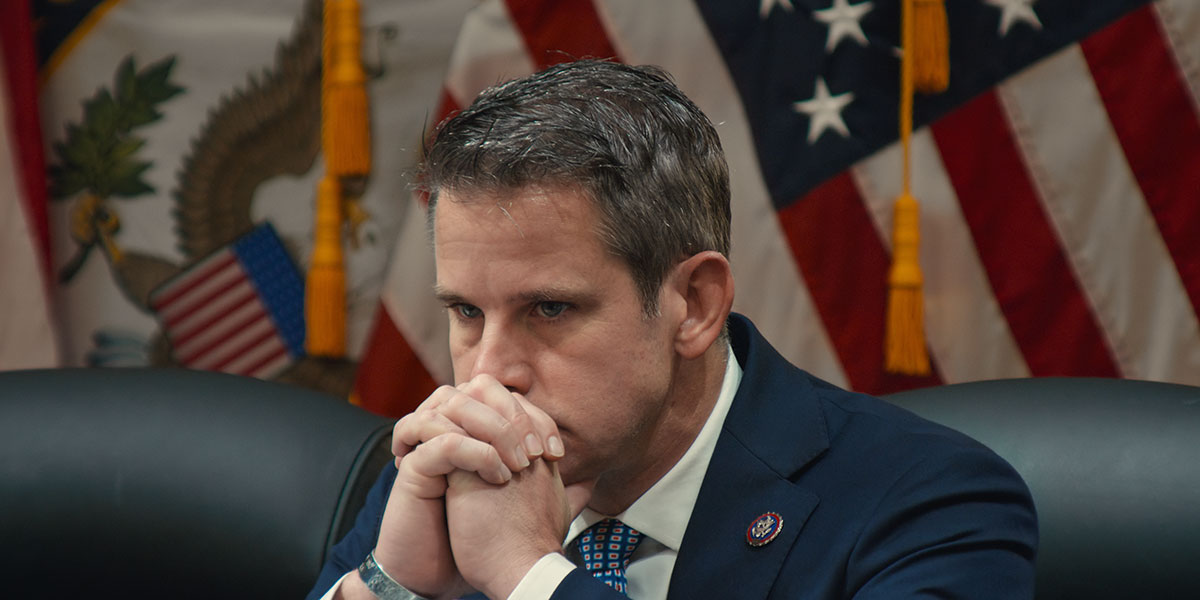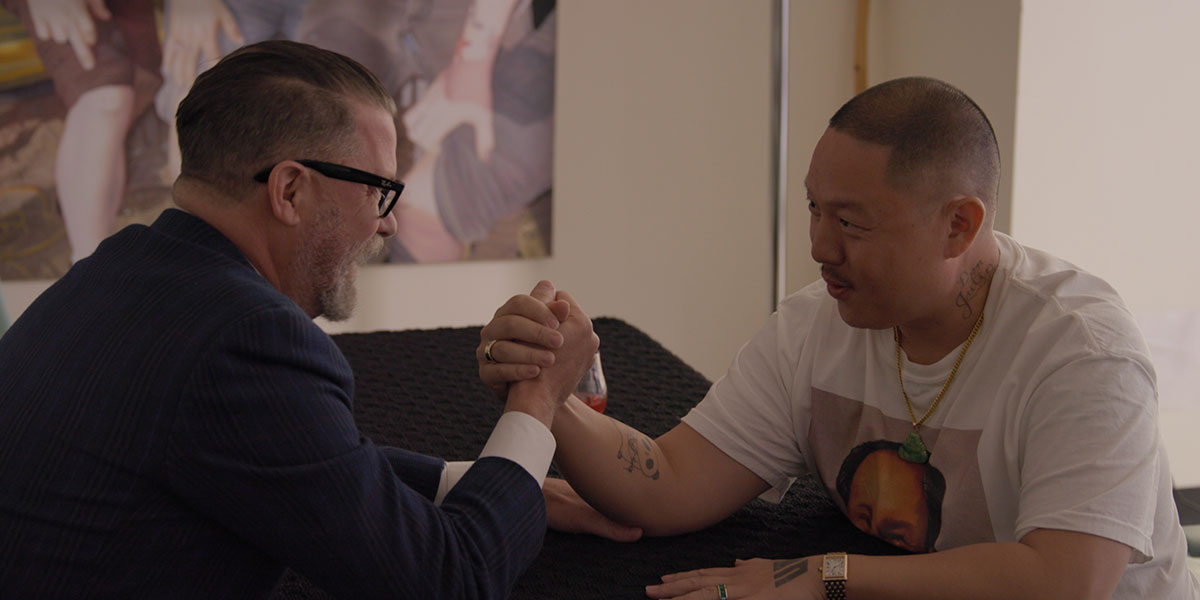Publisher’s note (Sept. 13): This preview article features a conversation with a director whose film presents an anti-war portrait of Russia’s illegal invasion of Ukraine, as seen through the eyes of Russian soldiers. The film depicts the disarray of the Russian army and the growing disillusion of soldiers, some of whom come to recognize the futility of war. The filmmaker has stated her support for Ukraine. POV unequivocally stands with Ukraine as well. Our support for the Ukrainian story can further be seen in coverage of numerous films, including 20 Days in Mariupol, In the Rearview, Viktor, and other docs. As film critics, though, we encourage people to see the film before reviewing it.
“I think it’s important to tell this side of the story because there’s almost nothing from this side of the story,” says Russians at War director Anastasia Trofimova. “This is not the first war that I’ve covered. If memory serves me right, this war is the most unequally covered war because there’s almost nothing from the Russian side, and there’s almost nothing from the Russian soldiers’ side.”
The Russian-Canadian director, speaking with POV via Zoom from Paris ahead of Russians at War’s North American premiere at the Toronto International Film Festival, presents audiences with a challenge. The film, a Canadian-French co-production, invites empathy with the Russian soldiers on the front lines of the war in Ukraine. Trofimova embeds herself with troops at the front lines of the war and, without endorsing their views, learns why these Russian soldiers fight. Some fight to avenge fallen comrades, others hope to conquer “Ukrainian Naziism,” while some fight to support family members or friends. Others just need a job.
“Maybe this is ambitious to say, but in a way it paves the road to peace because without understanding there can be no peace,” Trofimova reflects when asked about telling this side of the story. “If there is no understanding of the Russian side in terms of the motivations, then we are left with the situation that we have now, which is far from ideal. My main question is that I wanted to know who these guys are because the war happened. It’s something that I never believed would’ve been possible for the war to come to our backyard.”
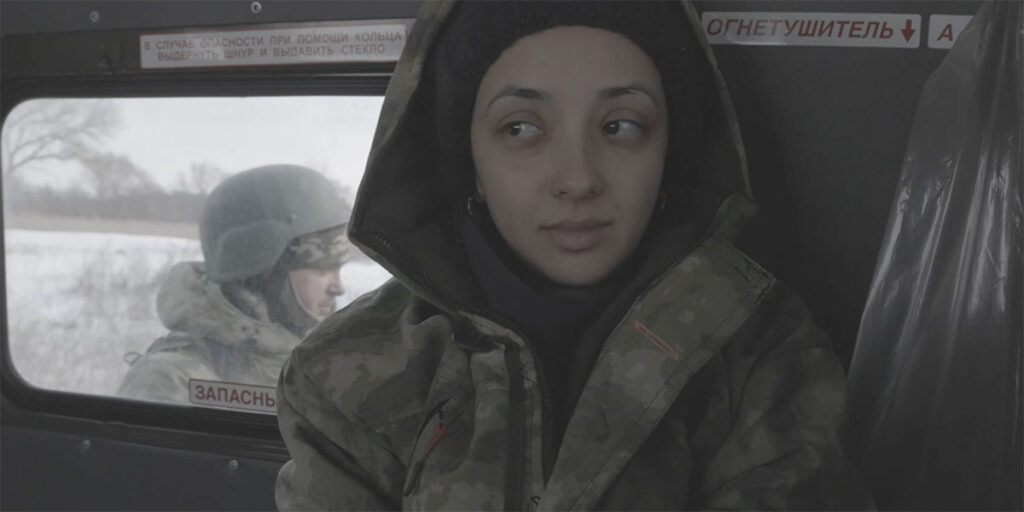
Trofimova says she had scoured press coverage of the war and, noticing an absence of human stories, sought to learn more about the people in the fight. “I got most of this picture about Russian soldiers paradoxically from the western side and from the Ukrainian side,” she notes. “And this was more about war crimes.”
After several false starts with soldiers who either defected or opted out of shooting, the director says she had a breakthrough. Russians at War opens with Trofimova’s fateful encounter with solider Ilya while returning from another aborted shoot. The director recalls the striking chance of meeting Ilya, a Ukrainian, wearing a Russian soldier’s uniform beneath his Santa suit. Trofimova says that Ilya, to her surprise, welcomed the idea of a filmmaker accompanying him to the front.
With no press accreditation, nor ministry approval, Trofimova sets out to the front line. “I took my camera, the train and went to what used to be the border,” says Trofimova. “Because I’m a citizen of Russia and by Russia standards, this is now considered to be Russian territory, you can just pass through there if you have your passport. I went there as a civilian and thought that if anybody would ask me, I would say I’m visiting someone.”
Russians at War affords remarkable access to tell a human story. Trofimova says that once she was in the barracks, soldiers were receptive to participating. “I said to them, ‘This war is the biggest event of our modern history, and you guys are its main actors. If you’re okay with that, I would like to just film your day to day and your lives.’” Trofimova says that soldiers were open and admitted that repercussions for participating were moot given that they were already at the front. (The film also blurs any info that could identify specific trucks or locations.)
Russians at War introduces audiences to men like Vitaly the cook, Amin the medic, Cap the drone operator, and Cartoon, the infantry soldier. The latter, only 20 years old, has views that may seem naïve, but he also can’t hide his fear. At the same time, the film finds genuinely touching moments by observing the growing romance between two Russians in the medical unit. The bond reframes their sense of duty.
From the first scene, it’s clear that battle weighs heavily on these soldiers. They tell Trofimova about a squad of 900 men in which only 300 returned unscathed, if at all. Grown men cry while simply remembering fallen comrades. Ilya, meanwhile, introduces Trofimova to the barracks cat, a feisty critter who affords comfort and keeps the mice at bay. Trofimova asks them pointed questions about war crimes, or the truth about reports on them. Soldiers deny the reports and insist they’re all propaganda.
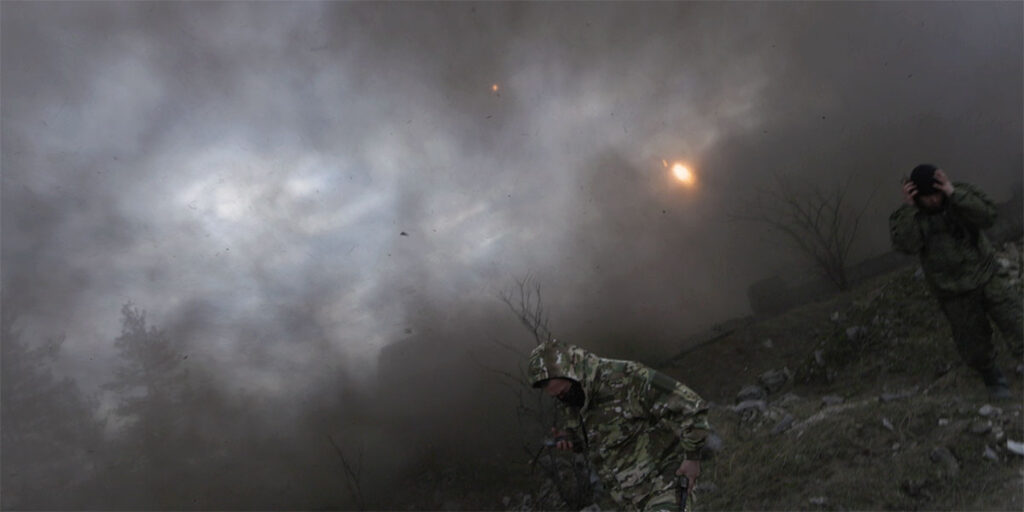
Trofimova says that common links among the soldiers were infrequent with one exception. “The thing that united them, at least with this battalion, was that they wanted for the war to be over,” says Trofimova. “Every few days, the soldiers would come up to me because I had the opportunity to travel outside, to access the internet, or to talk to people, and they would ask ‘What are they saying? When is this going to be done? Is this going to be done?’ That was surprising for me. They were just regular people who are in a completely irregular situation, which none of them chose and then a lot of them didn’t know was coming.”
The soldiers also teach Trofimova the ins and outs of the battalion. She observes trucks marked with “200” or “300” on the windshield. The figures represent cars carrying the wounded in the former and the dead in the latter. “We see these numbers often,” she notes in voiceover.
The film follows the soldiers closer to the front. One characterizes the bombed out area of Donbass as “stagnant gonorrhea” while they bring supplies to survivors merely two kilometres from the front. Soldiers wade into fields scarred by war to retrieve bodies of fallen friends. It soon becomes apparent that many of the soldiers seen through Trofimova’s lens will join the ranks of the “200” or “300.”
Jarring emotional turns follow as soldiers express concerns about going into the field and then fail to return. “This was not the first time I’ve experienced loss of characters that I’ve been close to and that I’ve filmed, but I was there for much longer than most of my previous films,” says Trofimova, who spent seven months with the battalion off and on. The film observes her huddled in a ramshackle bunker, anxiously waiting on the encroaching bombing, or sharing emotional moments, like an engagement or the loss of a colleague.
“The first death is the one that you remember the most, and that’s the one that I filmed,” says Trofimova. “It was hard because I walked around and I pondered what he was like, what his life was like, who was waiting for him back home, was he scared before he died—all these things. Then it becomes a conveyor after a while and you think that you will never get used to it, but in a way, you do.”
Trofimova acknowledges that this is something she knows having filmed people in conflict around the world. “You cannot emotionally last otherwise,” she says. “A lot of the people that you saw in this film have been injured. Some of the people are no longer alive and, unfortunately, this keeps going and going.”
Previous films have brought Trofimova to zones of war and conflict, including Syria for The Road to Raqqa, Iraq for Iraqi Safe House, and the Democratic Republic of Congo for Congo, My Precious. The director finds herself in a unique perspective with Russians at War: chronicling a war in which her country is the agitator.
“I have a number of friends who are documentary filmmakers and some of them refuse to cover this war because it’s like you’re filming your own divorce,” observes Trofimova. “You’re in it and you are the completely unwilling participant of it. Your perception of yourself and your country completely changes because you never thought that this would be possible. Because Ukraine is so close to Russia and a lot of Russians and Ukrainians have family ties, this war cut through family ties, this war cut through friendships, and it’s closer, so you feel it much more.”
Part of keeping safe in such dangerous locations comes in working alone in the field. Trofimova says she was a one-woman crew on location: directing, shooting, and capturing sound solo. “I decided from the beginning of the war that whatever I film, I will always do it alone. I understood the stakes and there’s a possibility of me getting arrested or me getting wounded or killed, and I don’t want to put anybody else’s life in the danger,” she says.
“It’s much safer for me as well because I know it’s only up to me,” Trofimova continues. “So I was the only one working on this project on the ground in Moscow and when I went to the front, it was completely unpredictable. We didn’t know how long I would be there for. We didn’t know what’s exactly going to happen in a lot of places. There was no connection, so I had to go out and connect to Wi-Fi in a store or in some sort of administrative building closer to the rear.” The director adds that she tried to connect with her producers—Oscar nominee Cornelia Principe (To Kill a Tiger), Sally Blake, and French producer Philippe Lavasseur—weekly for check-ins, which doubled as feedback conversations and safety updates.
Russians at War illustrates the gravity of shooting at the front, too, thanks to footage caught by the soldiers themselves. GoPros affixed to soldiers capture the horrors of war in graphic detail: bodies, some left for long, challenge viewers to look away. Awesome drone footage, most of which was shot by Cap on the Russian side, gives a bird’s eye view of battle.
“I was with this battalion on two fronts, the Krasny Liman front and Bakhmut front. The first front was a bit easier, so there weren’t that many drones,” explains Trofimova. “There wasn’t much shelling at that point of the war on that front, so I was able to go to the frontline trenches to film Ilya digging the trench.” The director says she could also sit and live in the trenches with the soldiers on the Krasny Liman front, but it was too dangerous to go in and out on the Bakhmut front.
“Usually, there’s an attack, so mortars or drones, so I was told that it’s not going to happen,” she says of filming on the Bakhmut front. “The guys would record the front line for me because they explained that it’s all covered in bodies that have been lying there a few seasons.”
Further drone shots show both sides of the war in action—sometimes to a degree that’s impossible to stomach. One sequence late in the film sees Cedar show Trofimova intense footage of a Ukrainian drone striking a Russian soldier. It fires repeatedly until the man is dead.
Trofimova says she discussed with producers the extent to which she should show graphic and sensitive material, but ultimately sees how they add another layer to the story. “This is Ukrainian footage. Russians and Ukrainians monitor each other on Telegram—that is what everybody uses in the region,” she says, noting the role of social media in the war. Both factions post videos of their strikes on their respective channels. “Not everybody has a GoPro. It’s a bit different on the Ukrainian side because it’s also a war of visuals.”
The director adds that the scene of Cedar sharing the footage marks an important turning point. The director initially observes a character with a peaceful, anti-war philosophy who refuses to use the same derogatory terms that other soldiers employ in reference to Ukrainians. But she says she couldn’t overlook the change in his spirit.
“I wanted to understand what made that change possible,” notes Trofimova. “The fact that half of the people he was with died—he saw them die, he heard them die, and he was with them since the beginning—of course impacted that. It also showed how violence spawns more violence. It’s not like you get to a certain body count and bam, that’s it, we can finish the war. The war is now personal. It’s not because of some ideology. You remember your friends who died because of the other side, and it already doesn’t matter how the war started for you because you just remember your friends, your personal story. It’s the same story on both sides.”
Honing into such a personal element while also witnessing the war of visuals is just one of many instances in which Russians at War confronts the element of propaganda in the conflict. Multiple scenes see soldiers tell Trofimova not to believe what she hears on TV, while they also repeat dubious claims made by Russian media. However, Trofimova says that being in the fog of war makes the propaganda somewhat irrelevant as events unfold around you. “When you’re on the ground, you start to think about All Quiet on the Western Front, you start thinking about War and Peace. You start thinking about coverage or literature that was focused on the common person,” she observes.
“You start to remember that you have read about this before. You have seen this before, and this war looks like all the wars that were fought before. If you read accounts of people who took part in the war, who participated in the war, it looks the same. It’s blood, it’s hunger, it’s loss, it’s boredom because you’re waiting for something to happen. It’s none of those nice black and white slogans that, unfortunately, are often used.”
Russians at War goes back to that personal element of All Quiet on the Western Front—perhaps the greatest of anti-war works—and observes an awakening as some soldiers, and the families who grieve them, ask questions that are absent from the barracks in the early sees. Trofimova says that one can only be hopeful about the situation after seeing the story from this side.
“I hope that diplomacy will win because I know I don’t romanticize war. I’ve seen enough of it,” she says. “Perpetual war is not the answer. I hope that all sides involved could come to some sort of understanding because every day people are dying. Every day. There are kids who are becoming orphans every day. There are parents who are losing their loved ones on both sides. It’s a tragedy for our region. It’s a tragedy for humanity overall. We still haven’t learned to live with each other, but I hope that we will come to an understanding.”




